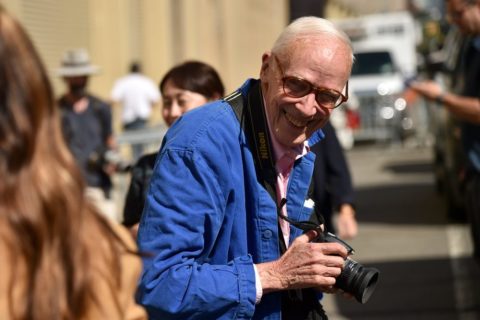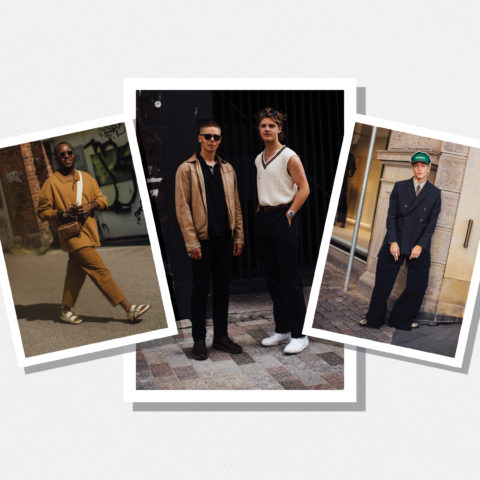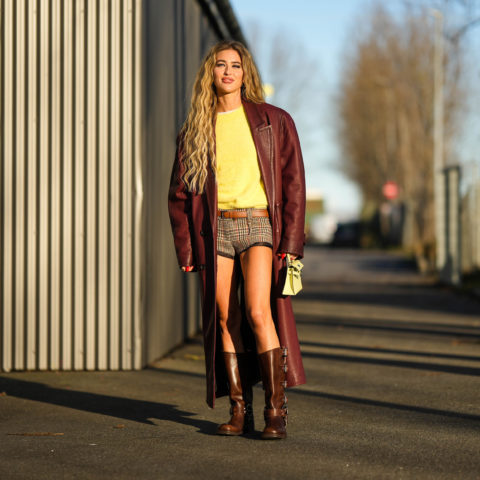Bill Cunningham, fashion badass

On Saturday, June 25, the fashion industry lost one of its greatest voices when Bill Cunningham passed away at the age of 87. His legacy can be seen in the countless photographic and editorial contributions he offered readers of The New York Times for nearly 40 years. His life was devoted to chronicling our changing times by primarily focusing on the eclectic streets and events of New York City, a global village in its own right. Few sharp shooters in the fashion field are known as true purveyors of what we describe as counter culture. Cunningham was one of them. Here are a few reasons why:
Unlike many photographers, Bill Cunningham was a designer first.
In fact, he was a milliner before he became a snapper. As a child he was drawn to attending church on Sunday—a routine he carried throughout his life—so he could wonder over the shapes and curves of the hats he saw in the aisles. This obsession transferred over to his job as on-the-street photographer, where he’d obsess over trims, hems, heels and detail.
He ignored fashion’s caste system.
Cunningham could care less about labels and the imposing, obvious trends coming off of the catwalk…when he attended runway shows, his photos seized atypical moments. He was vehemently anti-stylist and his work proves it. In his mind’s eye, a vintage 5-dollar find could easily trump whatever pricey look was trotting up 57th Street. It wasn’t a sense of self-importance he hunted; it was the quiet lure of persuasion and provocation that excited him. Trend worshippers and people who wore dictated designs were of no interest to him. He shared his number one rule in a piece he wrote in the Times in 2002: “I never bothered with celebrities unless they were wearing something interesting.”
He rejected the establishment.
Although he would be sent to many charity events and dinner with he ladies and lords of Wall Street and society, Cunningham chose never to look at guest lists before confirming his presence, regardless of promises of royalty. Cunningham was adamant that his pages in The New York Times were not to be regarded as “a shallow society column.” “Money is the cheapest thing and freedom is the most expensive thing around” he’d often say.
He had no clique, no squad.
Cunningham chose work over friendship time and again, stating in the documentary, “there was no time.” His creative output thrived on autonomy—so much so, he didn’t take money for the work he did at Details magazine, a publication that would run up to 125 photos of his. His loneliness was filled by the greatness he witness and reflected. Content with cheap 3-5 dollar meals, he wasn’t the type to do sit down lunches with coworkers or party it up after snapping an event. No matter how hard everyone tried to get him to be a guest at one of the swanky soirees he attended, his interloper status was self-inflicted and self preservational.
He was enviro-minded.
His bike was his uber driver and his upper hand. It gave him a way to keep above ground, avoid gritty subway lighting as much and abstain from experiencing the whizz and whirl of a cab, which are near impossible to shoot in. The two wheels gave him just the right amount of speed to transition from street to street—without pollution and without sacrificing the neighborhood treasures he kept seeking.
His sensibility was emphatically feminist and uniquely progressive.
He wouldn’t lust over his subject, nor would he glorify them into some sort of untouchable goddess position—the everyday Joe or Jane was able to access his vision. The man never photographed a woman in a demeaning way either. He snapped life as it was unfolding and, as a result, captured social movements as they were growing.
Cunningham’s snaps reveal that he never photographed women as garnish—his lens made them leaders. His film—which was obsessively archived and surrounded his one bedroom, no-frills apartment in Carnegie Hall for years—is a veritable timeline of the women’s movement, as we know it. His female subjects are depicted as decision makers, rabble-rousers and game changers, those constantly reacting to their ever-changing environment with what they wear.
He was a gay rights supporter—in his own way.
As a young man, living in the 50s, his family saw fashion as a shameful industry for a man—they felt it was associated with homosexuality, something unheard of at the time. For his first hat designs, Cunningham deliberately didn’t use his last name, stating, “My family would have been too embarrassed.” In his 2010 documentary, Bill Cunningham New York, when the question of his sexuality comes up, he sobs. No matter what his issues were, the reality is, Cunningham represented in a quiet way. It was during that sweep of time in the ’70s when gay liberation was just a handful of unpopular voices, fighting to rise up.
Through his work, he GBLTQ+ members visibility. In 1979, he snapped a fund-raiser at the Fire Island Pines, a time when his employer, The New York Times, didn’t even print the word “gay” (they would wait until 1987 to do so.) He also covered AIDS/HIV benefits when so many people would not attend them. In the early days of the pandemic, many ignorantly feared they would contract HIV/AIDS simply by being around gay men. He later pushed the paper into printing his now groundbreaking “Men in Skirts” column in 1993 —which was released right after New York’s Pride Parade (a number of American papers didn’t touch Pride until the late ’90s).







